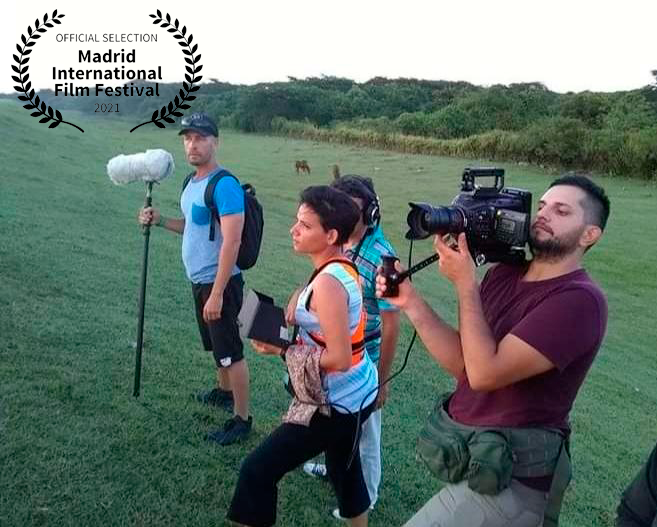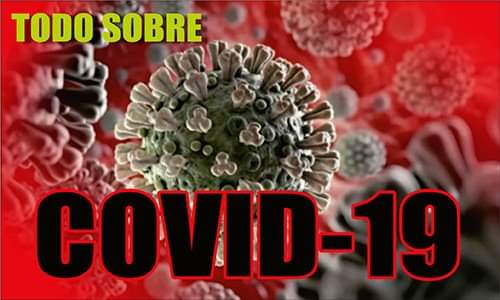
In our territory, many talented young people invested their days, during this time of the pandemic, in leaving their mark on cultural events. One of them is Yanet Pavón Bernal, a student at the Faculty of Audiovisual Media (FAMCA, by its acronym in Spanish) of the University of the Arts (ISA, by its acronym in Spanish) and director of the film La machetera (Cane Cutter Woman), an independent project that recently participated in La Femme International Film Festival.
Las Tunas, Cuba.- "La machetera," says the editor of the TunasVisión TV channel, "is a fiction film inspired by a true story set in 1978, in the municipality of Manatí. It does not pretend to be feminist, but it does highlight the autonomy of women and their right to work in any profession. In this case, it refers to a teacher who returns from Havana to the countryside where she was born and decides to join a machete squad in which she is not accepted and competes to win the grand prize. It is an Italian production headed by LeonCubaFilm, NewKpler, in collaboration with Zamjat".
The realization of any audiovisual project requires permits, the support of residents and authorities...
"We have the approval of the Union of Writers and Artists of Cuba (UNEAC, by its acronym in Spanish), Performing Arts, Provincial Culture Delegation, the Saíz Brothers Association (AHS, by its acronym in Spanish), Azcuba, the Provincial Government and the municipality of Manatí itself."
How did the project come about?
"First I have to talk about Esnedy, she is a former model and actress born in Manatí, a Cuban-Italian citizen. We met and worked together on her short film Herradura, in which I did the assistant director and script, along with the experienced director Federico Schlater."
"One day she calls and tells me that she wants to make a film inspired by a story she wrote and that I was going to direct it; I didn't accept, it was too big for me, I was just starting at Famca and I had a lot to learn."
Although fashion is a cyclical process, making a film inspired by the 70s must be quite a challenge for a young woman of the 21st century, also if we take into account that the ways of expressing oneself change over time.
"Yes, it is a challenge, when I was proposed the film I only agreed to work on the correction of the script because this was originally written in Italian by Valentina Orrú, and together with my father we saw issues of the time, and he explained to me the ways of speaking, behavior, and clothing of the time, issues that I did not know because of my youth."
Directing is not your thing, but when did you agree to direct the film?
"I was in charge of the AHS audiovisual club: To be, ser o estar, but I wanted to have a workshop section, where I could follow up on scripts, ideas for short films or music videos."
"Almost a year of work went by and that's when I took on the responsibility of making the film; with many fears, I decided to take it to the cultural gathering and submit it to the workshop. I explained the story, brought storyboards and we had discussions, with the idea also of finding young people who wanted to join this laborious creative adventure."
"The cast was made up of actors from Total Teatro, La Escena Viva group from the Manatí cultural center, amateurs who work at TunasVisión TV channel, and residents of the localities of Cerro de Caisimú and Cornito, who with the help of Yunior Pérez were carefully chosen according to the characteristics of each character."
How was the shooting process?
"It was planned for 18 days, but in reality, it was 21, plus it had a particularity, it was a workshop shooting of a film: the director of photography Giuliano Gastaldi, a recent graduate of the technical academy in Rome, taught the camera assistant's the technological components of the Black Magic, lighting and other technical needs."
"It was the same for the direct sound capture, teachers Ricardo and Veronica explained to Viguer Suró all the requirements to do it. While I was teaching Roxana, Lili, and Katia how to take the script, which is extremely important."
How did the post-production process go?
"This was a very hard stage for me because I couldn't go to Rome, where the final editing of the film was going to be done, the whole process took place in the height of the Covid-19 pandemic in that country. I spent long hours on the phone and at the post office punctuating sequences, as well as the insertion of protection shots to achieve the final editing."
"During the elaboration of the project we always agreed that the music had to have that guajira essence, created and interpreted by local singers; that's why we found the music of Freddy Laffita, Conjunto Cucalambé, Rumores del Yáquimo, Neisi, and Gustavo Machín, as well as the collaboration of young composers Carolina Baños and Mario Salvador, from Havana."
Who was in charge of the final touches?
"Then everything would be taken to the sound column of Marco Lo Russo, Italian musician, composer and teacher, lover of Cuban sonority. The sound correction and sound design were in charge of Andrea Gramigna, an acclaimed filmmaker who has worked on films such as Bernardo Bertolucci's Stolen Beauty, and the experienced director Marcello Spoletini was in charge of the editing."
"A new project is always something that makes us hesitate, we throw ourselves into something we barely know, but that can open many doors and provide us with endless accumulated knowledge and experience."
"That's what this film represents, a challenge for the whole team that makes us feel proud of our homeland and of the desire of these young people to make local talent known around the world."





